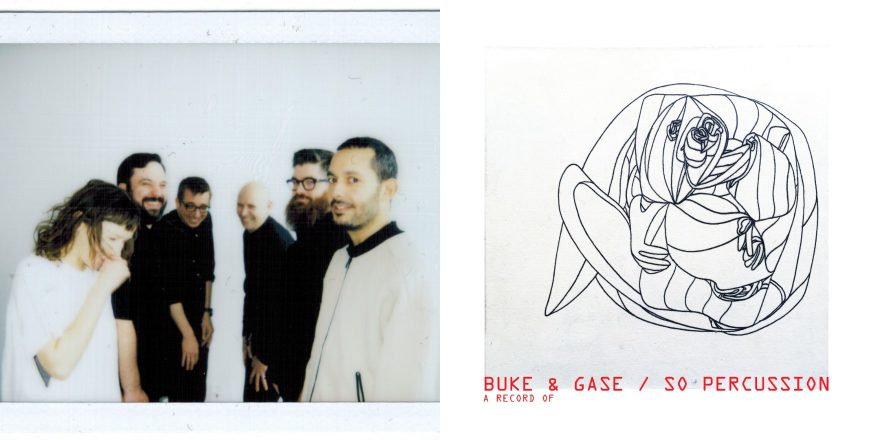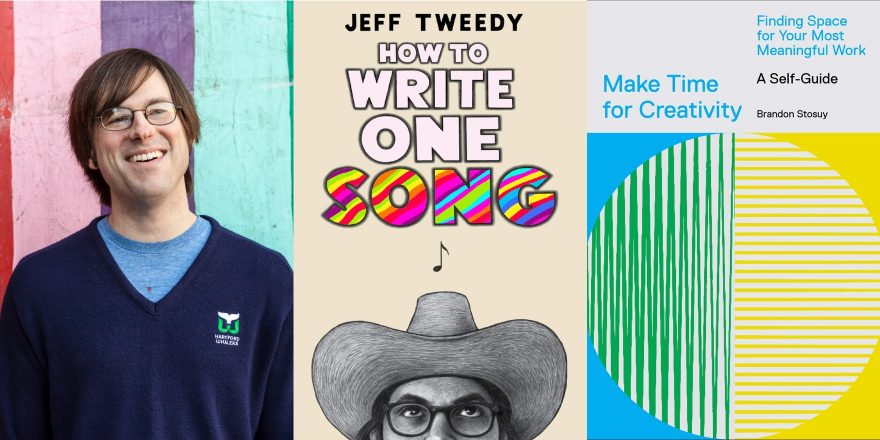When I was an undergraduate at Oberlin, I used to accompany modern dance classes with percussion for extra money. My first day in the class, the instructor said, “We need a beat at this tempo” — they clapped it out — and here’s the combination so you can help the dancers: 12, 17, 5-5-5, then two sets of three, then a short pair of 4s. OK, ready, go.” I don’t actually remember the combination, but it was something like that.
I started piano at age 5, percussion at 8, and sang in choirs my whole life — in all of those activities, the music was grouped into tidy units of 2, 3, 4, or 6 beats, with the occasional crazy 5 or 7. I had never encountered sequences like this. It was something of a revelation to me that the dancers were just counting each set of moves, not necessarily mapping them onto the patterns of 4/4 bars that I was accustomed to. I needed to adapt quickly to a different way of thinking that would affect the kind of music I created.
Every time Sō Percussion collaborates with another artist, there is a fruitful process of figuring out how our thinking must converge and what is going to come out of it. For our new album with Buke and Gase entitled A Record Of…, our groups already possessed one common strength, that we were both accustomed to inventing instruments. This is typical for percussionists, but it is also one of the most unique things about Buke and Gase. Arone Dyer’s Baritone Ukulele possesses the quality of a lead guitar and a distinctively raw sound. Aron Sanchez’ Gase is a wholly made-up instrument combining bass and guitar strings, which requires him to invent his own techniques. There is a delirious freedom in playing such instruments. To add even more cohesion to our collaboration, Aron started building new instruments for Sō Percussion as well. He built a Bulbul Tarang (Punjabi stringed instrument based on a Japanese instrument) for Eric Cha-Beach, which is featured on the song “Spinach,” and he fabricated the unique “chord-stick” instruments Bryce Dessner invented for us for Music for Wood and Strings.
Our greatest difference, however, is that Sō Percussion works with traditional music notation and Buke and Gase does not. But as my experience with the dancers taught me, thinking in terms of notation can hinder as often as it helps. Those little loops of time signatures can create ruts in your mind that are difficult to imagine your way out of.
In a lot of contemporary classical music, composers use the score in much the same way an architect uses a blueprint: for long-range planning to design structures that (hopefully) hold together. With the music Eric and fellow Sō Percussion member Jason Treuting wrote for this album, notation and other types of written shorthand allowed them to plan number games and apply filters to patterns. In the opening of Hold It In, Jason’s music for two vibraphones begins haltingly and sporadically, eventually coalescing into an audible cycle.
The music Buke and Gase wrote for this album centers around driving guitar riffs with quirky and unexpected turns. They had their own way of expressing and feeling these patterns, using memory and Digital Audio Workstation layouts to keep track of them, and it was important for us to get inside their heads so that we could accompany them. “Ancient Tool Gadget” and “Spinach” are both examples of songs that were built around these ideas. They are the heart of the album, and nothing Sō Percussion made on our own would have this same character of sound or concept.
Much of the fun of our collaboration happened along this continuum: an edgy, transparent, riff-based idea from Buke and Gase combined with some kind of rhythmic canon or expanding number sequence by Sō. It is easy to hear each distinctively in the music, yet they go together remarkably well.
The other crucial element from Buke and Gase’s side of the collaboration were Arone’s vocal melodies and lyrics. In a way, she had the trickiest job: Many of these songs bubbled up from the instrumental textures, and not always in ways which lent themselves to songwriting. In many of them, she found ways to harness repetition. In “Diazepam,” the basic loop is six bars of five beats each. This was one of Jason’s creations. Each time that cycle repeats, one small detail in the orchestration changes. Arone needed to work within that limitation and add emotional content.
Brilliantly, she created her own pinwheel of three lines, which, mantra-like, intensify their meaning with each repetition. She also performs slight variations when they come around:
To wait for someone to hold you tight
Is to forget to hold yourself right
You’ll do fine for now
The first time we heard Arone sing these lines for “Diazepam,” I felt that it couldn’t have come out any other way. I started to hear the underlying music differently, as clearly belonging to the “Sō-Buke” hybrid band. The best collaborations have these moments where you find yourself inside the new entity — where the band can start to think, feel, and create in another paradigm.






